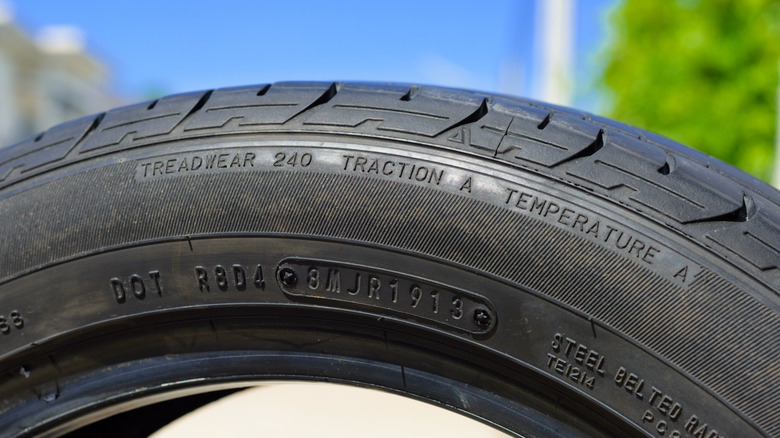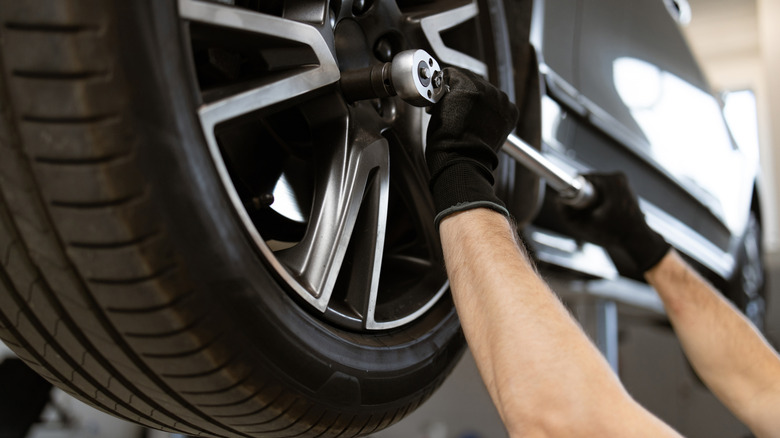What Does UTQG Mean? How To Interpret The Tire Rating
If you've ever been curious about what all those numbers and letters are on the side of your tires (aside from the brand name, of course), and you've gone down a bit of a research rabbit hole, you'll likely end up somewhere with the UTQG acronym. UTQG stands for Uniform Tire Quality Grading, and it's the series of ratings that most commercial tires get, so you understand the kind of performance they offer, as well as factors like how long the tires will last.
There are three main factors that contribute to UTQG: Treadwear, Traction, and Temperature. So, how long it takes a tire to wear down, what kind of traction it provides, and how a tire holds up under high heat and high speed conditions. Those three different factors are rated in different ways, originally established by the National Highway Transportation Safety Administration (NHTSA), and they're designed to help consumers understand what kind of tire they're getting when a purchase is made. Technically, the companies making the tires self-report their tests and results, so there's some room for differences between different brands, but the standard is a good place to start.
Treadwear, traction, and temperature
The three ratings that make up UTQG (treadwear, traction, temperature) were originally established through a series of tests. Treadwear, the first rating, is based on a driving loop. The 400-mile loop is done repeatedly until 7,200 miles are complete. The tire is then compared to a reference tire. If the wear is the same as the reference tire, that tire gets a 100 treadwear rating. If the tire being tested is able to double the life of the reference tire, that's a 200 treadwear rating (which is commonly the lowest allowed treadwear rating for many track and autocross events). If the tire lasts five times as long as the reference tire, that's a 500 treadwear rating. Higher numbers are typically better if you want a longer-lasting tire, while lower treadwear ratings are associated with high-performance tires. Wear and tear will happen sooner on lower treadwear-rated tires.
Tire traction ratings are based on the friction created when the tire skids across wet asphalt or concrete. The more friction a tire has when it's locked up and skidding, the higher the traction grade is, with C being the lowest, then B, A, and AA being the stickiest tire. Temperature rating is about how well a tire resists the buildup of heat at speed, or heat resistance to be more specific. C is the bare minimum for temperature ratings, with B and A going above it (no AA in this category).

